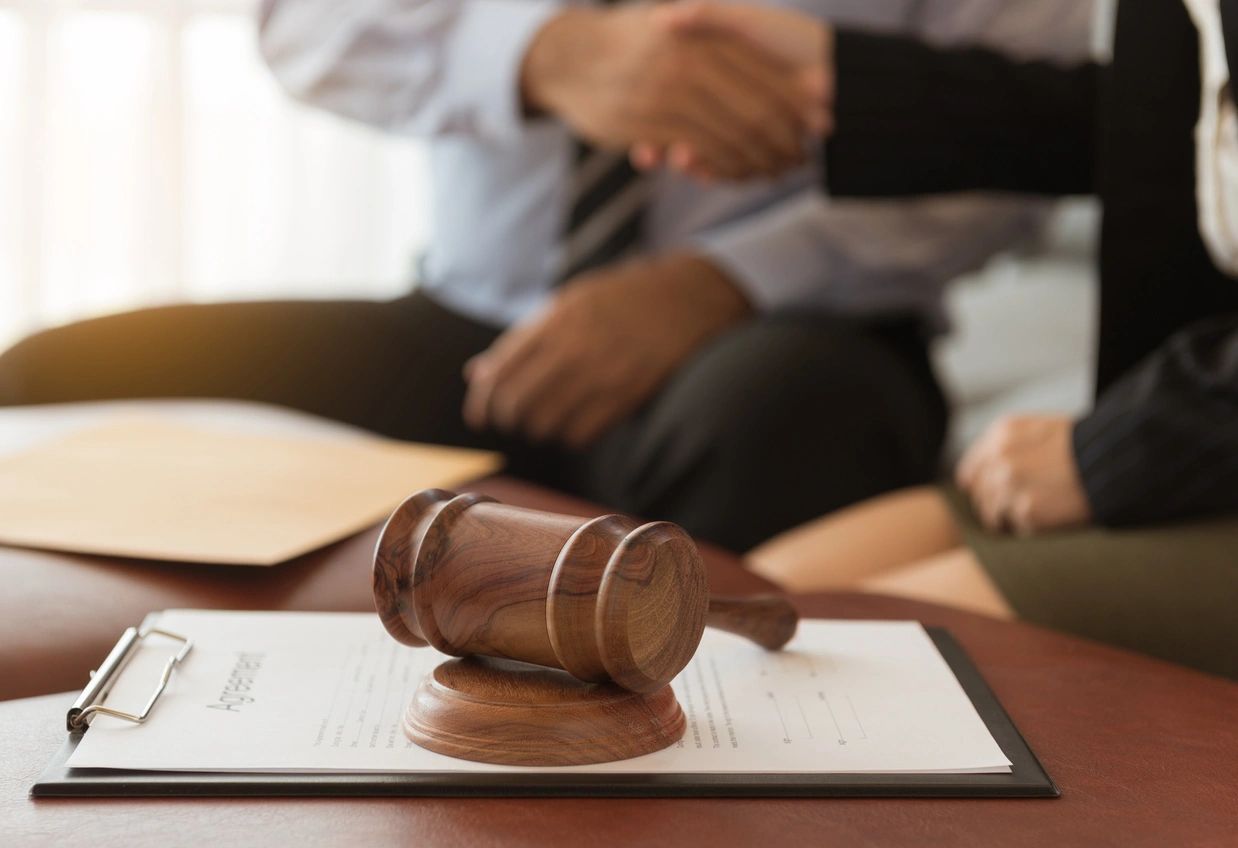ORANGE COUNTY'S "BEST" OR "TOP-RATED" DUI DEFENSE LAWYERS RATED BY SUPER LAWYERS, ORANGE COUNTY'S "TOP-RATED" DUI DEFENSE ATTORNEYS
Educate Yourself About Consensual Contacts & Encounters
THE LAW BEHIND CONSENSUAL CONTACTS OR ENCOUNTERS AND DETENTIONS
While not all contact, (including the difference between a consensual contact and encounter), by a law enforcement agent gives rise to Fourth Amendment protections, “[I]t must be recognized that whenever a police officer accosts an individual and restrains his freedom to walk away, he has ‘seized’ that person.”Terry v. Ohio (1968) 392 U.S. 1, 16.
Regarding consensual counter and encounter, while reasonable suspicion is a lesser standard than probable cause, officers must still offer the following:
[S]pecific and articulable facts causing him to suspect that (1) some activity relating to crime has taken place or is occurring or about to occur, and (2) the person he intends to stop or detain is involved in that activity. Not only must he subjectively entertain such a suspicion, but it must be objectively reasonable for him to do so: the facts must be such as would cause any reasonable police officer in a like position, drawing when appropriate on his training and his experience…
See: In re Tony C. (1978) 21 Cal.3d 888, 893.
Now “It is the right of every person to enjoy the use of public streets, buildings, parks, and other conveniences without unwarranted interference or harassment by agents of the law.” An investigative stop or detention predicated on mere curiosity, rumor, or hunch is unlawful, even though the officer may be acting in complete good faith. “In short, viewed either singularly or collectively the circumstances known to Officer Joy did not support a reasonable suspicion that Tony and his companion were involved in any criminal activity when he observed them walking along the sidewalk.” Id. at 898. Furthermore, a detention occurs when an officer accosts an individual on suspicion that the person may be personally involved in some criminal activity “a police officer may not use the authority of his uniform and badge to go around promiscuously bothering citizens”. Id. at 893.
In People v. Perrusquia (2007) 150 Cal.App.4th 228, (an Orange County case), the Court explicated what constitutes reasonable suspicion before an officer can contact an individual legally parked in a public parking lot. In Perrusquia the Anaheim Police Department was briefed regarding a series of six armed robberies at 7-Eleven stores in Anaheim. The Anaheim Police Department was specifically patrolling 7-Elevens in Anaheim. At about 11:26 p.m. Anaheim Police Department officers pulled into a 7-Eleven on Harbor Boulevard and La Palma, which officers testified was a high crime area prone to assault with deadly weapons and drug complaint calls. The officer testified that the Defendant’s vehicle was parked next to the exit facing La Palma, even though other spots were closer to the store. Before contacting the Defendant, the officer watched and observed that the Defendant was leaning against the glass, crouched low, and not moving. The officer heard fumbling and something hit the floor of the car with a “thud.” The officer saw the Defendant look at him through the side window, whereupon the Defendant exited the car and attempted to walk past officers who stated to “hold on a second,” detaining the Defendant. Despite the high crime area, the fact the officer was specifically patrolling 7-Elevens due to ongoing armed robberies of 7-Elevens in that area, the officer articulated the defendant exhibited strange behavior consistent with a possible crime, the Trial Court held, and the Appellate Court affirmed, there was insufficient reasonable suspicion to detain as the officers were not able to “articulate facts from which an ordinary person would believe that a crime has been or is about to be committed.” [Emphasis added.] Id. at 232. The matter was therefore dismissed.
In People v. Wilkins (1986) 186 Cal.App.3d 804, a marked patrol vehicle was on routine patrol at about 10:18 p.m. when it pulled into a convenience market parking lot. The officer testified that prior to contacting Defendant he observed 2 occupants in the front seat of the parked vehicle and as he drove past them the two occupants lowered themselves in an apparent attempt to avoid contact with the officer. That particular parking lot was known for thefts in the attached stores and narcotics activities. The officer testified he drove past the parked vehicle and then drove through the parking lot again to “find out what they were doing in this particular area”. Id. at 807. The officer approached and smelled the odor of burning incense, which the officer testified was sometimes used to conceal the odor of burning contraband, and requested identification. Citing Terry v. Ohio,supra at 19, the Court found there was a seizure under the Fourth Amendment. “[W]henever a police officer accosts an individual and restrains his freedom to walk away, he has ‘seized’ that person.”
In People v. Bailey (1986) 176 Cal.App.3d 402 an unmarked police car pulled in behind a vehicle parked, after hours, in a parking lot of a Sears. The officer testified that individuals would park their cars in that lot and ingest drugs. The officer turned on his emergency lights and approached the vehicle. The officer testified that he smelled the odor of marijuana and the Defendant handed over a bag of marijuana and a subsequent search after arrest yielded a bag of cocaine, paraphernalia, another bag of marijuana, and a loaded pistol. The Court found Defendant’s consent was given involuntarily through the officer’s assertion of authority. Consent must be “voluntary and not in response to any express or implied assertion of authority. Conversely, if the consent is given because of an unlawful assertion of authority, it is not voluntary and is unlawful.” Bailey at 405, citing Florida v. Royer (1983) 460 U.S. 491 and Wilson v. Superior Court (1983) 34 Cal.3d 777.
In People v. Garry (2007) 156 Cal.App.4th 1100, the Court found that an officer shining a spotlight on the Defendant and quickly approaching the Defendant while he was on the street was a detention. In Garry, officers were patrolling a high-crime, high-drug area where illegal street drugs were sold and police officers assaulted. Mr. Garry was standing next to a parked car and the officer pulled up behind the vehicle and illuminated the Defendant from about 35 feet away. The Defendant had a look of nervousness and stated he lived in a house to the right. The Court found that even though that the officer parked 35 feet away, had no officers with him, did not employ the emergency lights, did not draw a weapon, made no verbal commands, and went to the Defendant instead of requesting the Defendant to approach, a reasonable person would be intimidated.
And in Brown v. Texas (1979) 99 S.Ct. 2637 the United States Supreme Court held that when officers detained that defendant for the purpose of requiring him to identify himself, they performed a “seizure” of his person subject to the requirements of the Fourth Amendment. In Brown, the officers observed the defendant and another man walking away from one another in an alley in an area that had a high incidence of drug traffic. The officer believed that activity “looked suspicious.” The Court found that those circumstances did not rise to a reasonable suspicion that the defendant was engaged in, or had engaged in, criminal conduct and thus it was an illegal detention for questioning. The Court held that there was a Fourth Amendment violation. See also, Delaware v. Prouse (1979) 440 U.S. 648 (“Except in those situations in which there is at least articulable and reasonable suspicion that a motorist is un-licensed or that an automobile is not registered, or that either the vehicle or an occupant is otherwise subject to seizure for violation of law, detaining the driver in order to check his license and registration of the automobile are unreasonable under the Fourth Amendment.”)
The difference between a lawful encounter versus an unlawful encounter often depends on the question of whether the consensual contact and encounter was an actual encounter or a detention.
Orange County DUI Attorneys Providing DUI Defense in Orange County - Laguna Hills, Laguna Beach, Orange
CALL NOW!
FREE CONSULTATION: (949) 235-2250




